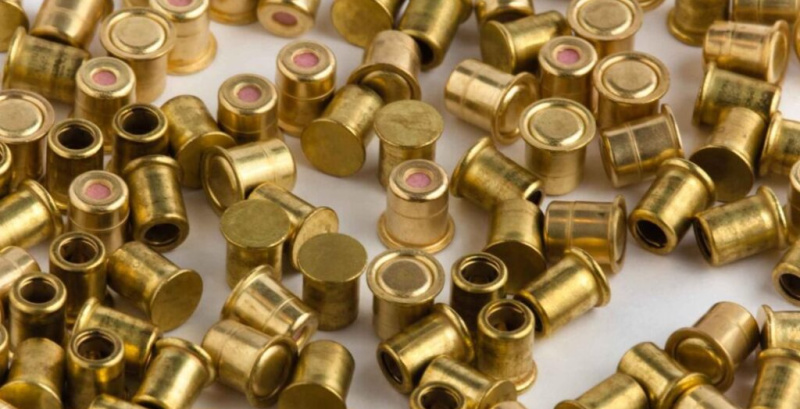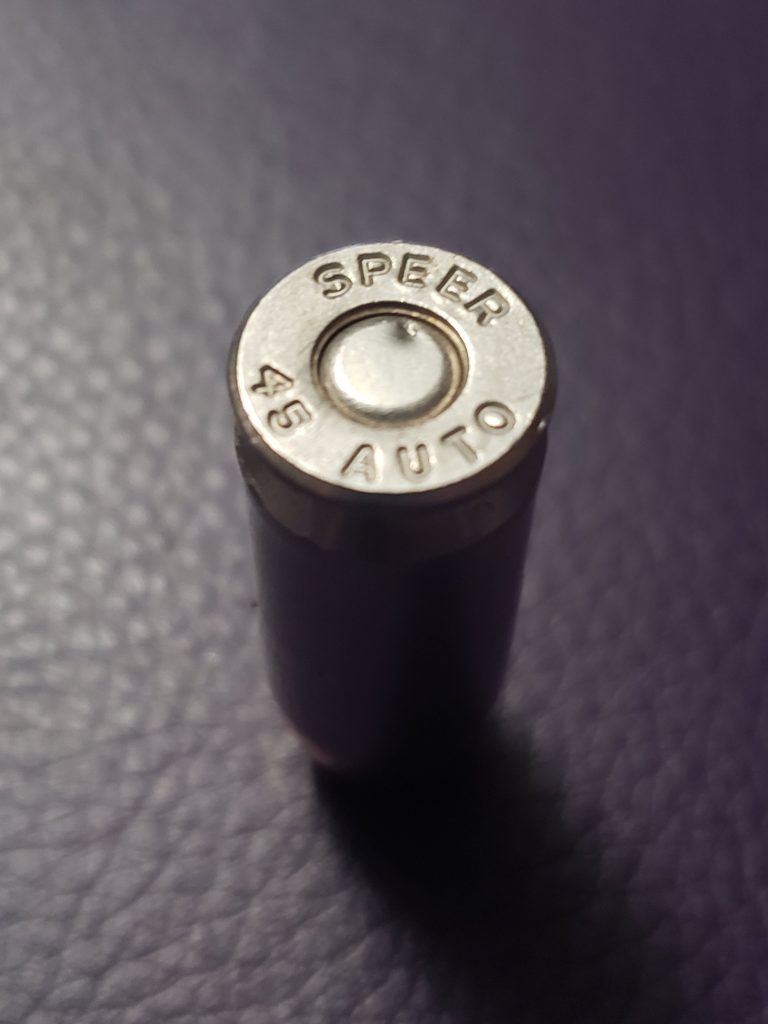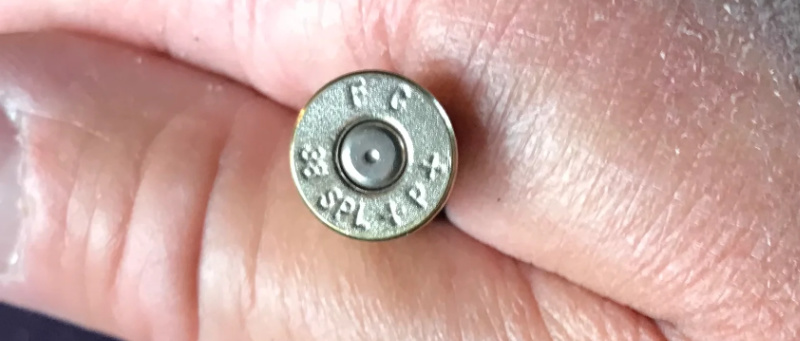If you spend much time shooting guns, you start hearing certain phrases with increasing regularity. Many of those phrases have to do with the various failures a firearm can experience and light strikes are mentioned fairly often. So what is a primer light strike, and what — if anything — can be done to prevent it? We’re here to answer those questions, and more, with this primer light strike guide.

What is a primer light strike?
Broadly, a primer light strike refers to a failure to fire where the firing pin of the gun didn’t make enough contact with the primer to fire the gun. The primer is a tiny, circular ammo component you can see located at the center of the bottom of a round of ammunition (in centerfire ammo, which is what we’re discussing here). Primers contain the chemical compound required to ignite the propellant inside the cartridge, which, in turn, sends the bullet down range. You pull the trigger, the firing pin impacts the primer, and a shot is fired (it’s more complex than this, but you get the idea).
When the primer fails to ignite because the firing pin didn’t impact it with enough force, it’s often assumed to be the fault of the ammunition. However, that isn’t always the case. Light primer strikes can be caused by the gun, too, so don’t be too quick to blame the ammo.
What does it look like?

When you get the “click, no boom” during live fire, your first reaction is probably going to be to try to pull the trigger again. While you can do that, it’s wise to pay attention to the sounds being made and the possibility that there’s a squib round, meaning you don’t want to pull that trigger again. It’s always safer to stop and check your gun before trying to shoot again.
If the failure to fire was caused by a light strike, there would be a faint mark on the primer of the round of ammunition. Depth and placement vary. If there’s no mark at all, you can certainly put the ammo back in and try again. When there is a faint mark showing evidence of a light strike, many shooters choose to set that round of ammunition aside before continuing to shoot.
How common are primer light strikes?

Although they do happen sometimes, primer light strikes aren’t that common. If you’re experiencing them regularly it’s past time to change ammunition brands. And if you’re having lots of primer light strikes regardless of the ammo you’re using, you need to take a hard look at the parts in your gun. Light strikes aren’t something that should happen regularly.
What causes primer light strikes?
There are a few common causes of primer light strikes, including:
- Hard primers on ammunition.
- Poor quality control, leading to improper seating or loading of ammunition.
- Fouling and build-up, hindering the movement of the firing pin or striker of the gun.
- Magazine-related failures can negatively affect feeding, so rounds aren’t properly fed into the chamber.
- Out-of-spec parts on a gun, which is more common with guns such as AR-15s built by the owner.
- Handloads or reloads not being loaded correctly by the shooter (or being borrowed from another shooter, which is never recommended).

Is it always caused by ammunition?
No, primer light strikes aren’t always caused by the ammunition itself. It’s quite common for the ammo to be at fault for one reason or another, but it can also be the fault of the gun’s firing pin or striker. This is one reason it’s a good idea to pay attention when you’re loading your gun. If you take a quick glance at each round of ammunition as you load it, you’re likely to catch any serious issues such as bullets seated at the wrong depth or primers that are missing entirely or improperly seated. Of course, it is also possible the ammo you’re using has hard primers.
Taking the above a step further, when you have one light strike in a box of ammo that is due to the ammo itself, it’s a good idea to stop and check the rest of the magazine or box. Sometimes it’s a random fluke, but other times it’s a quality control issue and you’re going to find out a bunch of rounds aren’t safe to shoot. It’s never a bad idea to do your due diligence.
Can a light strike be caused by the gun?
Yes, it’s possible for the gun itself to cause a light strike. If the rounds of ammunition look perfectly fine but aren’t firing, it’s reasonable to question the gun itself. Perhaps the easiest way to diagnose this is to try a different brand of ammunition and see if the gun has any issues firing it consistently.
Beyond trying different ammo, you might need to disassemble the gun to look for broken or worn-out parts. If you’re not confident in your gunsmith skills, you can take your gun to a qualified gunsmith to get checked. It is absolutely possible for firing pins and strikers to wear out and break, although it isn’t common in newer guns.

How can you avoid a primer light strike?
If you spend a lot of time shooting, you’re not going to entirely avoid failures. The more you shoot, the higher the odds of something going wrong, big or small. However, you can greatly reduce the risk of primer light strikes by avoiding brands of ammunition that are known for it (yes, they exist) and by properly maintaining your firearms. Dirty guns can have trouble operating correctly, so while we’ll typically say you can have a dirty gun as long as it’s kept lubed, it’s also true that there needs to be some routine care and cleaning. Spending time cleaning and lubing guns also gives you the opportunity to inspect the parts for wear and potential breakage.
A word on handloads and reloads: while there is nothing wrong with handloads or reloads when they’re loaded properly, it’s rarely a good idea to use them when they come from an outside source. Ammunition loaded by a friend or stranger is far more likely to involve failures and those failures can be beyond a light strike, they can be quite catastrophic. If you yourself are loading your own ammunition, make sure you’re doing it according to SAAMI guidelines and paying attention to what you’re doing. It might seem fun to have a few drinks and load some ammo, but it’s best to load ammo with a clear head and an eye for detail.
Are primer light strikes dangerous?
Taken by themselves, no, primer light strikes aren’t dangerous. They’re simply a failure of a round of ammunition to function properly in a way that means no bullet was propelled down the barrel of the gun. Primer light strikes shouldn’t be confused with other failures, such as squibs, that have the potential to be dangerous.
Have you noticed trends with ammo or guns related to light strikes? Share your experiences in the comments section.


